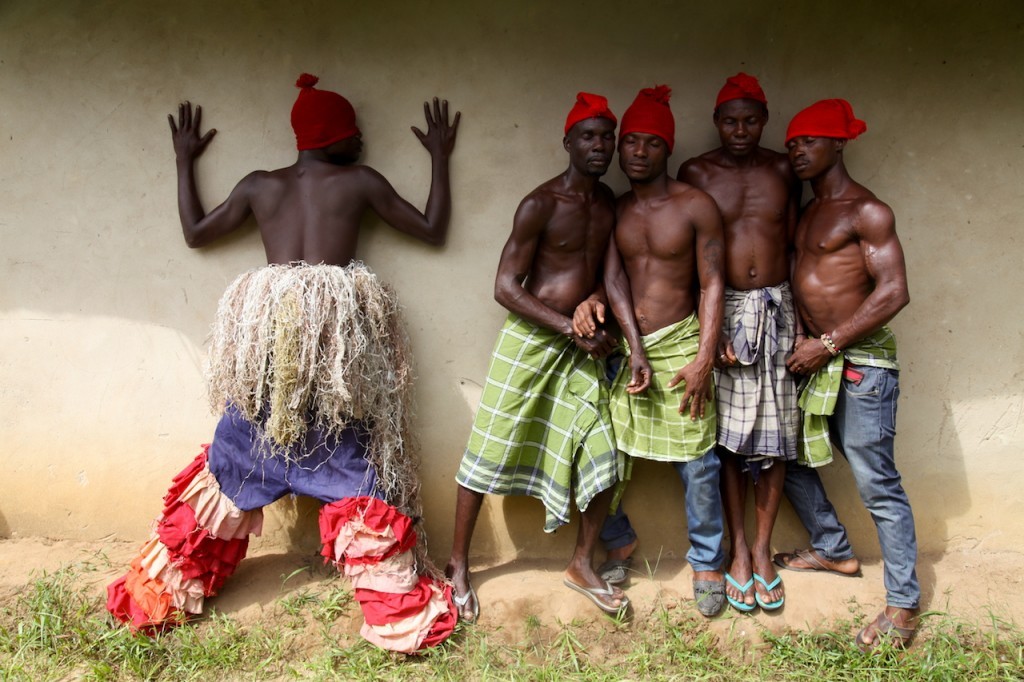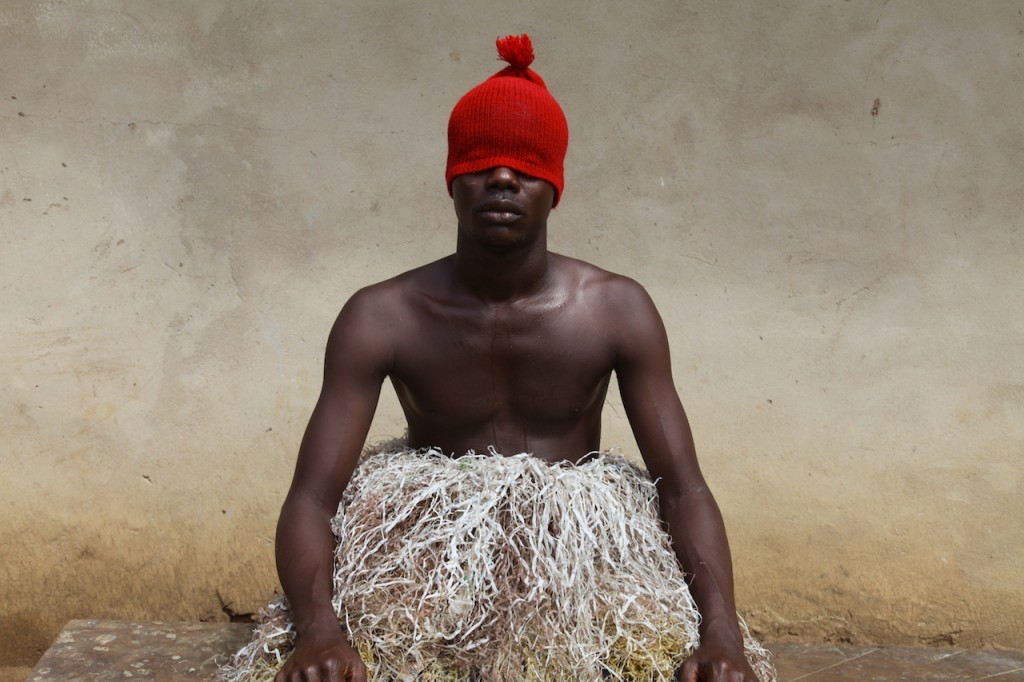
Zina Saro-Wiwa is one of the artists in the group show ‘Disguise: Masks & Global African Art’ in the Seattle Art Museum from June 18 until September 7, 2015.
From The Invisible Men’ series/video, 2015.
About Zina
Zina Saro-Wiwa is a video artist and film-maker from Nigeria. She makes video installations, documentaries, photographs and experimental films. She also works with food using feasting as part of her performance practise. Saro-Wiwa currently lives and works in the Niger Delta in Nigeria, where she is making new bodies of work for two major museum shows and where she has set up her own contemporary art gallery called Boys’ Quarters Project Space, in the city of Port Harcourt, for which she curates three to four shows a year.
Her current interest lies in mapping emotional landscapes. She often explores highly personal experiences, carefully recording their choreography, making tangible the space between internal experience and outward performance as well as bringing cross-cultural and environmental/geographic considerations to bear on these articulations. The slippery dynamics between “truth” , “reality” and “performance” lie at the heart of her video performance work.
About ‘Men of the Ogele’ (2014)
Dream.
Men of the Ogele is a photographic series by Zina Saro-Wiwa taken in Ogoniland. Located in Nigeria’s Niger Delta region, an hour or so East of the city of Port Harcourt, Ogoniland is a rural area consisting of six kingdoms and 111 villages. Like many parts of rural Africa, it has it own masquerading culture. Most masquerades were created far in the past before anyone can remember when or how they emerged. Traditionally tied to farming cycles, a masked performer would perform for audiences surrounded by drummers and flautists at specific times of the year like yam harvest or New Year. Masquerades existed and still exist to augur good luck for planting seasons, for entertainment and also as a form of social control. But in the 1980s and 1990s a new form of masquerade emerged in Ogoniland. Inspired by the political situation in Ogoni and the Niger Delta, a growing Ogoni consciousness spawned a masquerade called “Gbaaloo” which means “United” in Ogoni language. But the phenomenon is nicknamed “Ogele”.
Ogele groups were formed by young men and these masquerades featured large, tall, very heavy masks made of wood that were often painted with car paint that are markedly distinct from the face masks of previous generations. These tiered masks tell stories that reflect the political and sometimes psychological situation of the time they were created. The mystical permeates Ogele as the young men have a practise of disappearing into the forests for up to three years to “dream” the design of the masquerades masks and the accompanying songs and dances.
Grave.
Ogele groups are comprised of at least six men. There is the dancer who dresses in a colourful oversized bodysuit made from found materials and scraps as well as the heavy mask and then there are the musicians. As a group they move around villages of Ogoni or are hired for special occasions and political rallies. Though these men move in a group, Saro-Wiwa’s images often focus down on individual members, deconstructing the phenomenon both physically and emotionally.
Hope.
A difficult network of organizations to track, the men of the Ogele have never been photographed before and these pieces form part of a body of work about masquerade that Saro-Wiwa is creating in the Niger Delta for Seattle Art Museum. Playful, passionate and vulnerable, Saro-Wiwa’s images upend the usual presentation of African masquerade and gently dismantle the notion of ‘African tradition’. They suggest an emotional and living relationship between the mask, the mask wearer and the performance, breathing humanity into the interrogation of such African cultures. The unmasking of these secret societies gives us a rare glimpse into the hearts of minds of Ogoni men and challenge the highly politicised reading of Ogoni and Niger Delta life.




